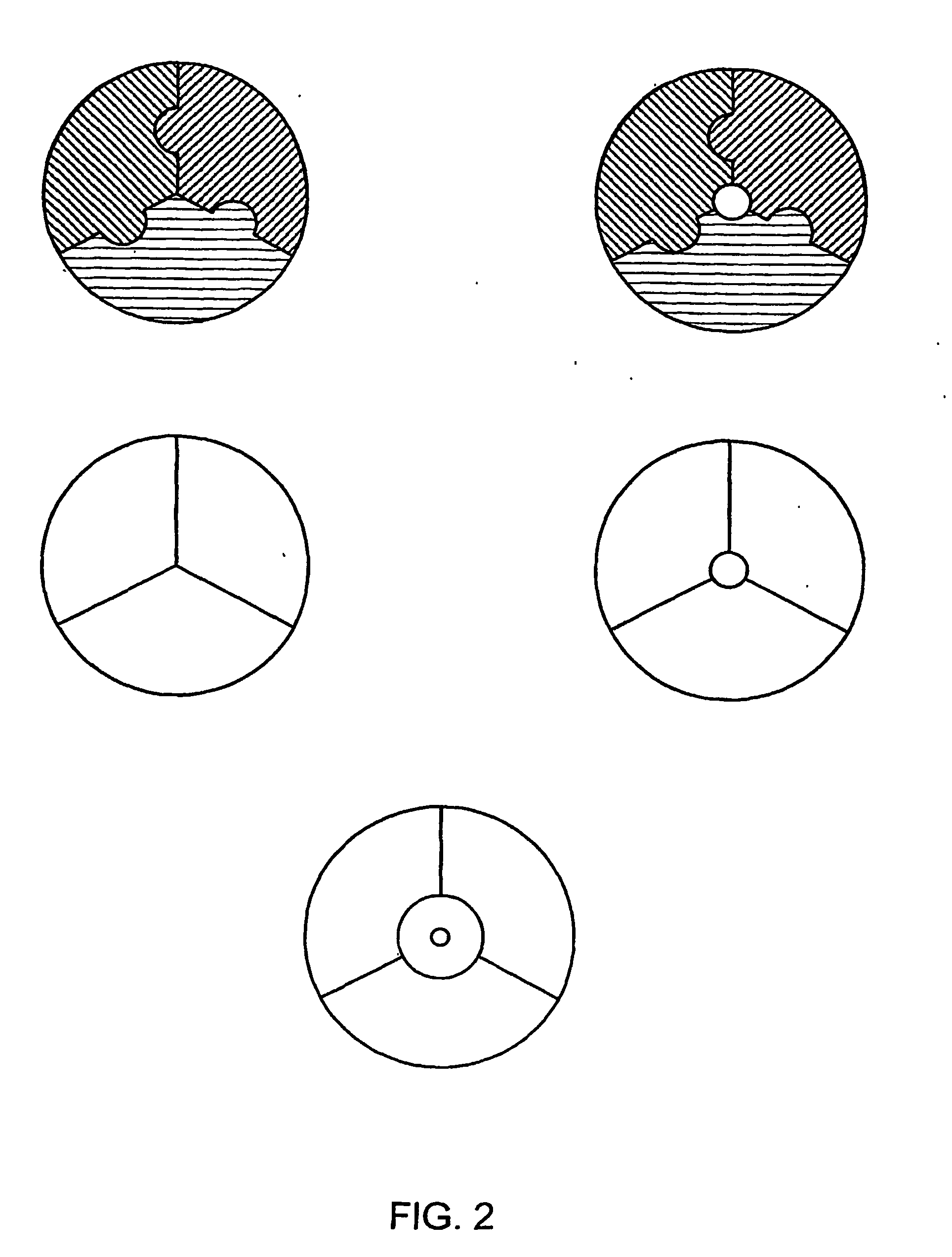Aluminum conductor composite core reinforced cable and method of manufacture
a technology of aluminum conductors and composite cores, applied in the direction of conductors, weaving, other domestic articles, etc., can solve the problems of single fiber/thermoplastic composite cores that fail to one fiber/thermoplastic composite core does not have the physical characteristics to effectively transfer load, and the composite core comprising glass fiber and thermoplastic resin does not meet the operating temperatures required for increased ampacity
- Summary
- Abstract
- Description
- Claims
- Application Information
AI Technical Summary
Benefits of technology
Problems solved by technology
Method used
Image
Examples
Embodiment Construction
[0023]The present invention will now be described more fully hereinafter with reference to the accompanying drawings, in which exemplary embodiments of the invention are shown. This invention may, however, be embodied in many different forms and should not be construed as limited to the embodiments set forth herein; rather, these embodiments are provided so that the disclosure will fully convey the scope of the invention to those skilled in the art.
[0024]An ACCC Reinforced Cable
[0025]The present invention relates to a reinforced composite core member, wherein said member further comprises an external surface coating. In one embodiment, the composite core comprises a composite material made from a plurality of fiber reinforcements from one or more fiber types embedded in a matrix. A further embodiment of the invention uses the composite core in an aluminum conductor composite core reinforced (ACCC) cable. These ACCC cables can provide for electrical power distribution wherein electri...
PUM
| Property | Measurement | Unit |
|---|---|---|
| operating temperatures | aaaaa | aaaaa |
| operating temperatures | aaaaa | aaaaa |
| temperatures | aaaaa | aaaaa |
Abstract
Description
Claims
Application Information
 Login to View More
Login to View More - R&D
- Intellectual Property
- Life Sciences
- Materials
- Tech Scout
- Unparalleled Data Quality
- Higher Quality Content
- 60% Fewer Hallucinations
Browse by: Latest US Patents, China's latest patents, Technical Efficacy Thesaurus, Application Domain, Technology Topic, Popular Technical Reports.
© 2025 PatSnap. All rights reserved.Legal|Privacy policy|Modern Slavery Act Transparency Statement|Sitemap|About US| Contact US: help@patsnap.com



